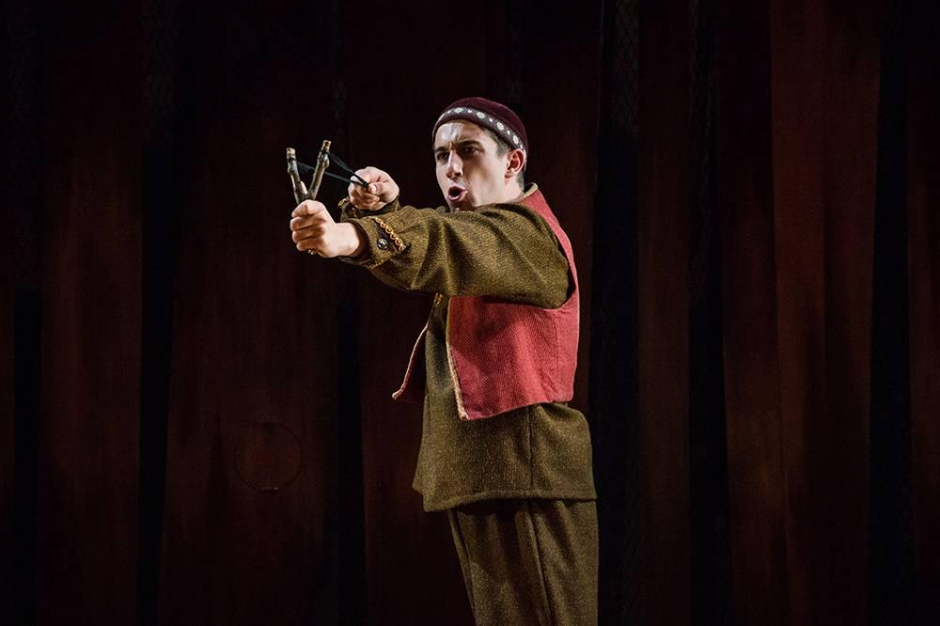The Kite Runner, based on the novel by Khaled Hosseini, directed by Giles Croft; The Lowry, 4 October 2017.
Set against the backdrop 1970s Afghanistan, The Kite Runner tells a deeply emotive tale of a brotherly relationship torn apart. Opening in Kabul in 1974, the play successfully subverts the Western audience’s expectations of life in the Middle East. While the audience might have anticipated a violent setting, the only reference to guns in the first act is when the children play at being John Wayne, and the only explosions are the fireworks at Amir’s birthday party.
During this period of relative calm in Afghanistan, the influence of the West, and America in particular, is striking. This is heightened by David Ahmad’s dual performance of Amir. Shifting between his roles as an Afghan child of the 70s and the narrator, a grown-up émigré in San Fransisco, Ahmad represents the collision of cultures that already seemed to exist in the Kabul of Amir’s childhood. His Western suit provides a sharp contrast to the more traditional Afghan clothing worn by the family’s servants, Hassan and Ali, and offers the audience a constant reminder of the American adult that he will later become.
Barney George’s simple set design aids the play’s smooth transition between East and West. The backdrop of wooden posts depicting Kabul’s rural infrastructure were swiftly transformed into the skyscrapers of San Fransisco in the second act.
Ahmad’s dual role as both child and adult is an effective device which is crucial to this adaptation. Not only does it enable the rapid shift between temporal settings, but it also ensures that the play retains the narrative voice of the adult protagonist which is fundamental to the novel’s success. Choosing to depicting boy and man through the same actor, Matthew Spangler creates a powerful reminder of the way that past actions implicate the person we go on to become.
Unfortunately, though, Ahmad’s constant shifting between the child Amir and the adult narrator which is necessitated by this adaptive device is somewhat jarring. While his high pitch and hunched stance effectively indicate his transition into the child’s persona, the direct contrast this holds against the more natural adult persona draws attention to the unconvincing artifice of his unbroken voice.
In all other regards, Ahmad’s performance was strong. Alongside Jo Ben Ayed as Hassan and Ezra Faroque Khan as Ali, Ahmad offers a compelling tale about betrayal and the loss of innocence. The most memorable performance was Emilio Doorgasingh as Amir’s father – a fiercely complex character who perhaps deserved a little more space for his role to be developed.
The greatest strength of this performance is the ease with which it merges the personal and the political. An emotive storyline and a gripping narrative provide a way in to a deeper understanding of life in the Afghanistan of the 1970s. The terrifying contrast between the Kabul depicted in the first act and that of the second highlights the extent of the devastation wrecked by the Taliban and the human impact of the regime. Ideas of nationality, displacement, racism, class structures, loyalty and truth are all explored in the context of this rapid transition in Afghan society, but the relevance of these themes to Western audiences also remains clear.
The 14+ age limit is justified by distressing content which includes scenes involving rape and torture. By exploring these weighty topics through an accessible narrative, however, the play also speaks to older teenagers. It was gratifying to see that school groups made up a substantial proportion of the audience. The thought-provoking manner in which the harrowing subject matter is explored in this performance will make it suitable and rewarding for older teens and adults alike.

